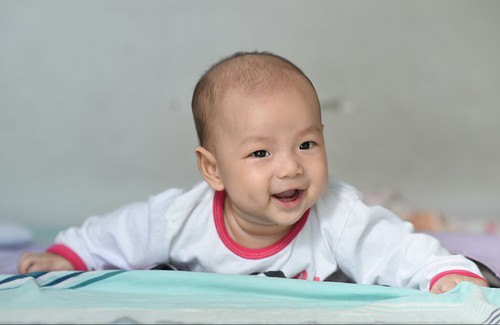membrane was washed and incubated either with anti-rabbit or with anti-mouse horseradish peroxidase-conjugated secondary antibodies. The membranes were then developed using the SuperSignal West Pico or ECL plus kit. Lentiviral Particles Production Ten centimeters plates were pre-coated with poly-L-lysine for 30 min before plating 6.106 of 293 T cells. The following day, cells were transfected with 4.68 mg of psPAX-2, 2.52 mg of pMD2.G and 9 mg of pSDM101-FLAG-TAX, or pSDM101empty using LipoD293 reagent. Tax-1, Tax-2B, and Tax-3 cDNA were amplified from pSG5M-Tax-1, pSG5M-Tax-2, and pSG5MTax-3, respectively. Seventy-two hours post-transfection, supernatants were collected, centrifuged for 5 min at 3000 rpm then filtered through a 22 mm filter. Stock of lentiviral particles were conserved at 280uC. Immunofluorescence 293 T cells were transduced with Lenti-Flag-Tax lentiviruses. Seventy two hours later, cells were fixed in 4% PFA solution for 20 min then permeabilized with 0.5% Triton X-100 for 10 min. Following washes with PBS, cells were preincubated with a 5% PBS/milk solution then incubated with anti-Flag M2 antibody at a 1:100 dilution in 5% PBS/milk for 1 h at 37uC. Samples were then stained with CY3-conjugated goat anti-IgG mouse at a 1/1000 dilution in 5% PBS/milk for 1 h at 37uC. Nucleic acids were stained with DAPI-containing mounting medium and cells were visualized with a Zeiss Axioplan 2 imaging microscope, X40, and the PubMed ID:http://www.ncbi.nlm.nih.gov/pubmed/22202440 the SimplePCI software. Transduction 293 T: 4.106 cells were plated on 10 cm dishes. Twenty-four hours later, lentiviral particles were incubated with 8 mg/ml of polybrene then added on the cells in 4 ml of DMEM-stable LGlutamine with antibiotics, without FBS. Six hours posttransduction, medium was replaced with complete medium. MOLT4:5.106 cells were prepared in 5 ml of DMEM-stable LGlutamine with antibiotics without FBS. Lentiviral particles were incubated with 8 mg/ml of polybrene and added to the cells. Cells were then centrifuged for 1 hour at 3000 rpm, at room temperature. Cell pellets were gently resuspended and complete medium was added 6 hours post-transduction. Luciferase Assays Forty-eight hours post-tranduction, 293 T cells were transiently transfected with HTLV-1-LTR-luc or NF-kB-luc, using Polyfect reagent. All the transfections were carried out in the presence of a phRG-TK vector in order to normalize the results for transfection efficiency. Reporter activities were assayed 24 h post-transfection using the dualluciferase reporter assay system. Luciferase assays were performed with the Veritas microplate luminometer. Microarray Experiments Seventy-two hours post-transduction, total RNAs were isolated from 293 T or MOLT4 cells using RNA-bee reagent. One hundred micrograms of RNA were purified using the RNeasy mini columns kit. cRNA probes were prepared following Affymetrix instructions and hybridized to Human Genome-U133-plus 2.0 GeneChipH oligonucleotide  arrays. Normalization of raw data and clustering analysis were performed using GeneChipH ZM-447439 site Operating software and BRB Array Tools software. Functional Analysis of Microarray Data Identification of set of genes specifically or commonly deregulated in Tax-1, Tax-2 or Tax-3-transduced cells versus control -transduced cells was performed by Venn diagram analysis. Gene ontology enrichment was evaluated by DAVID Bioinformatics web-tool . The DAVID Functional Annotation Tool application provided functional cluster of genes, according to similar and redunda
arrays. Normalization of raw data and clustering analysis were performed using GeneChipH ZM-447439 site Operating software and BRB Array Tools software. Functional Analysis of Microarray Data Identification of set of genes specifically or commonly deregulated in Tax-1, Tax-2 or Tax-3-transduced cells versus control -transduced cells was performed by Venn diagram analysis. Gene ontology enrichment was evaluated by DAVID Bioinformatics web-tool . The DAVID Functional Annotation Tool application provided functional cluster of genes, according to similar and redunda
